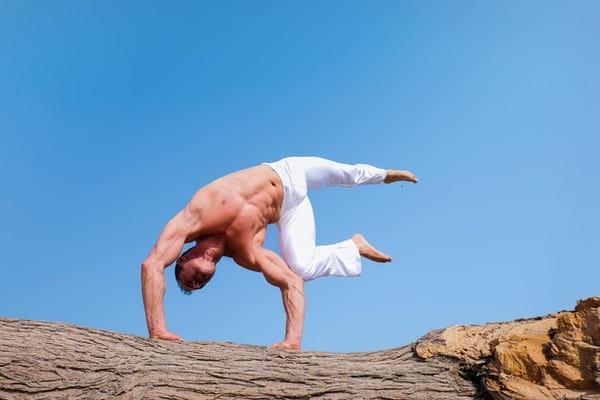
With the right teacher or class, the willingness to make modifications, and the right attitude, the “inflexible” yoga student can thrive.
The right teacher or class will depend upon, among other things, the student’s reasons for beginning a yoga practice.
The “inflexible” student who begins a yoga practice to lose weight may feel frustrated by the pace of a beginner/gentle class, regardless of the teacher’s talents. With a different objective in mind—say, stress reduction—the same student may find the tempo of a beginner or gentle session very gratifying.
Both students must do an honest and realistic assessment of their individual needs and skills and then seek out the appropriate instructor and class.
The Right Yoga Teacher for Inflexible People
That said, for the stiff, brand new yoga student, some instructors can provide more assistance than others by providing a safe space for all students, regardless of experience level. Such a teacher is knowledgeable about anatomy, posture modifications, and yoga props and teaches a class to foster non-competitiveness and self-care.
This teacher helps students cultivate the essential attitude of self-acceptance and steady, gradual “practice,”
A perspective allows all students to listen to their bodies and work where they are without pushing to the point of injury or obsessing over their inability to look just like the teacher or other students.
The following modifications could be practiced in a yoga class or at home. They involve the use of yoga blocks found in many fitness settings and blankets, which are common in yoga studios.
Yoga Modifications for Tight Hamstrings
Sit on a rolled mat, folded blanket or yoga bolster in seated forward bends. It changes the angle of the hips, takes the pressure off of the hamstrings, and allows the lower back to lengthen, which can be crucial in avoiding injury to this area.
Use a yoga block in standing bends. Students with tight hamstrings often complain that their arms are too short to reach the floor. A block bridges the space between the hand and the floor, providing support and assisting the learner in deepening the stretch without succumbing to the urge to grope for the floor, a habit that can lead to injury and, in some cases, can allow the student to prevent stretching the tight muscle.
Yoga Modifications for Tight Shoulders
Use a yoga strap or bring a gym towel to class. For students who cannot yet reach hand to hand behind their back, for example, a belt or towel offers an otherwise inaccessible stretch.
Yoga Modifications for Tight Hips
Raise the hips by sitting on a square or folded blanket in seated cross-leg postures. Many yoga classes begin with breath instruction and “centering,” which is often done in a seated, cross-leg posture that can cause significant pain and frustration to students with stiff hips. Sitting on a block or folded blanket relieves pressure on the hips and lower back and lets the spine rise more quickly.
Other Yoga Anatomy Lessons
Before attending yoga class, a novice yoga student may have just a hazy notion of the location of the hamstrings. During a yoga class, this will quickly change. A good teacher can help the student avoid an adversarial relationship with these “new” muscles and develop a sense of curiosity.
However, cultivating this mindset is ultimately up to the student, and this aspect of yoga practice is not always straightforward. However, the rewards for this “attitudinal” work extend far beyond flexible muscles into a more profound, freer experience of living off the mat.